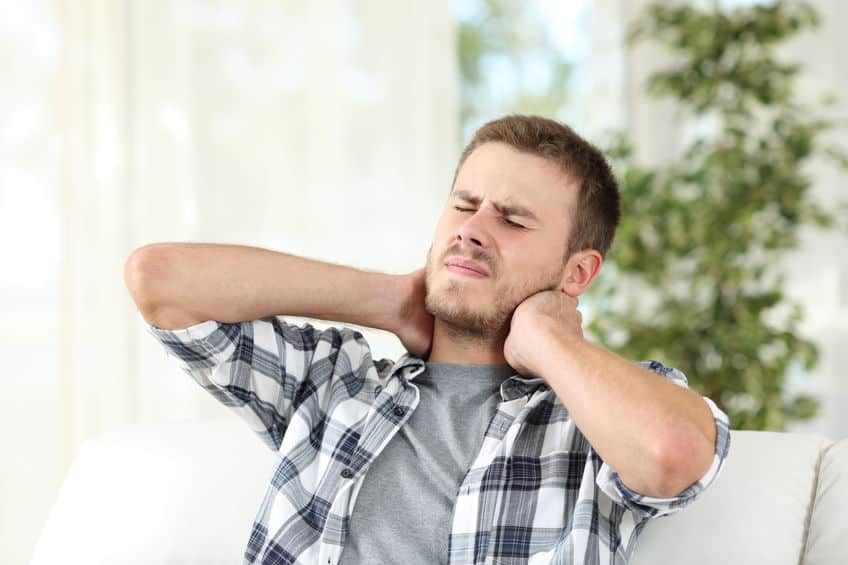The U.S. National Institute of Health Statistics reports that 15% of Americans are troubled by neck pain. Years of digging, raking, and mulching can lead to chronic shoulder and neck pain. In this article, we’ve gathered together the best tips and treatments available to address neck pain after yard work.
So, how can you prevent and treat neck pain from yard work? Neck pain can be treated and prevented by cultivating good yardwork practices that reduce the amount of strain on your neck and by visiting medical professionals such as chiropractors on a regular basis to receive treatment.
Whether you are a farmer, a gardener, or a landscaping expert, neck pain can make getting the job done that much more difficult. Keep reading to learn more about how to address neck pain after yard work.
Tips to Cultivate Smarter Practices to Treat Neck Pain
Sometimes neck pain after yard work can be minimized by a simple change of habits. Show up prepared and work smarter rather than harder. Have you invested in any of these helpful tools?
Leaf blower
Elevated garden bed
There are a wide variety of tools and accessories on the market today that are specifically designed to make yard work easier and more comfortable. Expanding your tool belt helps you get the exact same amount of work done if not more, while notably alleviating pressure to your neck and shoulders.
This leads us to our next good habit. Listening to your body. If your equipment comes with straps, then be sure to switch sides frequently as well as alternating how you stand or sit while you work.
Make a practice of taking frequent breaks while you work in your yard or garden. When reaching down to pick things up or to put them away, bend by using your knees and not at the waist. Keep the tools and equipment that you use very close to your body and center of gravity.
You can take some strain off of your body by adding in a warm-up and cool-down routine before and after your yard work. Warm-up with basic stretching exercises that target your neck, shoulders, and back muscles.
If pain ever occurs while stretching then immediately stop what you are doing. Stretches should activate the body slowly and with ease, never by causing pain.
An example of a proper stretch would be to stand tall, lifting your arms straight up and over your head as if you were reaching for the sky. Then, keeping your back straight, reach forward and down towards your toes. Repeat stretching exercises two or three times to increase blood flow to targeted areas. Cool-down by taking a walk and breathing deeply.
By keeping your back muscles strong and flexible in this way, you are preventing injuries caused by strain. Use of these practices on a regular basis can reduce the negative impact of yard work on your neck. However, we always encourage you to consult with a medical professional before making any treatment decisions.
Relieve Neck Pain from Yard Work with a Massage
Massages have been reported relieve neck pain if they are done regularly by a professional massage therapist and for an appropriate length of time.
A 60-minute massage applied at least two to three times weekly has been shown to be beneficial. (This research was found by the senior scientific investigator of the Kaiser Permanente Washington Health Research Institute, Karen Sherman.)
Regular massage therapy is shown to help relieve the body of pain. When you are a sufferer of chronic neck pain, in particular, your massage will address additional areas including your shoulders and upper back.
An experienced massage therapist will focus on the site of the pain first to relieve some pressure. Be careful when receiving a massage from a loved one, because direct pressure applied to the neck has the potential of exacerbating symptoms when done incorrectly.
Massages of the arms, chest, and back have shown to aid in reducing neck pain. Additionally, a professional massage around the face, head, and throat muscles can offer pain relief as well as the restoration of range of motion.
Besides relieving neck pain, receiving a regular massage on a weekly basis can help keep all of your joints loose and limber. This lowers your chances of injury by pulling a muscle while doing yard work. Massages can be relaxing both physically and mentally, acting as an effective stress reliever.

Visit a Chiropractor to Get Rid of Neck Pain from Yard Work
If gardening or lawn work is creating muscle or joint stiffness and pains your neck, one of the very best things you can do to get right down to the root of the problem is to see an experienced local chiropractor for treatment. And here’s why:
Your neck is also referred to as the cervical spine, and it begins at the base of your skull. Your neck contains several small vertebrae that work together and amazingly support the full weight of your head, which usually weighs around 12 pounds on average. While your neck can move the head in several directions, its flexibility can leave it vulnerable to pain and injury.
Your first visit with a local chiropractor will include a spinal health evaluation and possibly a spinal adjustment. He or she will be cognizant of all of your symptoms in order to give you an accurate diagnosis.
Your chiropractor may then request to view your complete medical history and perform additional exams to correctly locate the source of your pain.
Some questions you might be asked are:
- When did you first begin to experience neck pain?
- What remedies have you already tried to treat your neck pain?
- Does your neck pain ever radiate to other areas of your body?
- What currently reduces your neck pain or makes it worse?
Your chiropractic adjuster may continue your treatment with a physical or neurological exam. A physical exam can include any of the following actions:
- Observation of your posture
- Test to assess your range of motion
- Noting any movement that causes you pain
- Back examination to check your spine curvature and alignment
- Checks to feel for muscle spasms
- Examination of your shoulder area
Neck Pain Explained
These are just a few examples that your chiropractor may or may not use in order to find the source of your neck pain. During a neurological exam, your chiropractor could test your reflexes, muscular strength, and nerve changes.
He or she will converse with you about your yard work and gardening activities and to better determine what started your neck pain and what triggers it. A chiropractic specialist will go through all the necessary channels to create a plan of care for you that will get you back on track to a pain-free life and overall wellness.
You can benefit from chiropractic care in more ways than just one. Chiropractors are trained to assist you in finding ways better your health such as help with losing excessive weight or improving your diet and nutrition.
Overall, the experience that most people encounter when meeting with a chiropractor is a positive and encouraging one. Visiting a chiropractor will help you maintain a healthy lifestyle and get your body into great shape so you can get back outside and thoroughly enjoy it.
Are There Any Ways to Prevent Neck Pain from Starting While Doing Yard Work?
Neck pain may be magnified by strenuous yard work, but its origin may have been caused by a separate activity or event that placed strain the neck.
Poor posture, sleeping positions, or texting looking down at a cell phone are some things that can contribute to neck pain over time.
Neck pain can also originate from a personal injury. A sports injury or whiplash during a car accident can be causes of neck pain. However, sometimes neck pain may not have a clear cause.
You can avoid the types of neck pain that are caused by stress and muscle strain by simply being more aware of your movement in your day to day life.
You can avoid neck strain by reducing the amount of time in positions that add stress your neck. This might include sitting and looking at a computer screen for long periods of times without taking periodic breaks.
If your neck pain seems to increase towards the end of the day, consider what your posture looks like and whether or not you have been slumping. Correct this by sitting straight up in chairs with your feet flat to the floor. If your neck is most uncomfortable after waking up in the morning, try adjusting the position you sleep in. Think about using a body pillow that can aid in keeping your spine straight during the night.
Adding these changes to your daily routine can make yard work easier and prevent neck pain from worsening.

How Do You Know if Your Neck Pain is Serious Enough to See a Doctor?
Your therapist or chiropractor may recommend that you visit with a medical doctor for chronic neck pain that is not improving over time.
We encourage as a general tip to meet with a doctor or an ENT physician if your pain neck pain hasn’t lessened at all over the course of a few weeks of trying other treatment options consistently.
Another specific red flag to watch out for is neck pain that does not improve or worsens in spite of using painkillers. This could be a sign of something more serious.
Don’t ignore neck pain that is coupled with other symptoms such as the following:
- numbness of the arms or hands
- any loss of feeling
- severe headaches that may be brought on by bending the head forward
These signs indicate that you should seek the advice of a medical doctor as soon as you are able to. There are a number of less-common medical conditions that neck pain can be associated with, such as a narrowing of the spinal canal which is also referred to as cervical spinal stenosis, rheumatoid arthritis, or an infection in the neck.
Neck pain can take the fun out of yard work and gardening. If you are suffering from neck pain, give these tips and treatments a try. Some final pain-relieving tricks you can apply at home are hot and cold compresses, vapor rubs, alternative pain relief or essential oils, and finally, simply allow your body to stop and rest.

